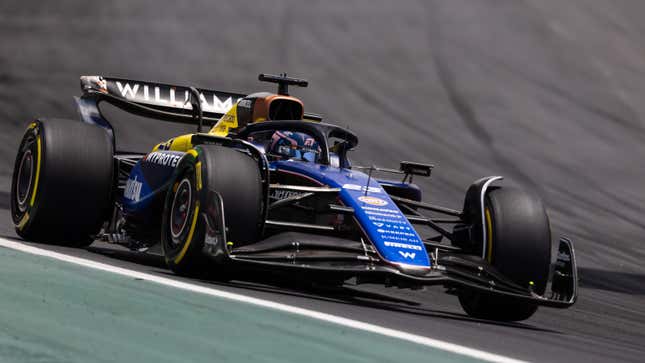Components 1 sees extremely strung athletes compete week in, week out on a number of the most demanding race tracks all over the world. The races aren’t all the time plain crusing, and the 2024 Brazilian Grand Prix was a nightmare for the Williams staff with each its drivers crashing out in spectacular type. Now, the staff has lifted the lid on the way it repairs and rebuilds vehicles which are destroyed on a race weekend.
Final time F1 went racing in Brazil, the rain was pouring down on nearly each session over the grand prix weekend. The difficult circumstances noticed Williams racer Alex Albon crash out in qualifying and fail to start out the race, whereas teammate Franco Colapinto crashed through the race as properly.
This meant that crates of smashed wings, damaged brakes and different trashed items of Components 1 vehicles had been shipped from Brazil again to the Williams base within the UK for the staff to attempt to salvage. In a brand new video shared by the staff, the Grove-based outfit has proven the method of unpacking the 2 trashed racers to focus on the repairs and rebuilds that may be carried out on these priceless machines.
The method begins with crates and crates of components arriving on the Williams base. From there, the fragments of F1 automobile are sorted into piles of components that may nonetheless be used and components that belong within the trash. Mechanics haul rapidly packed fragments of carbon fiber out of an enormous crate, and others maintain up exhaust pipes to point out the harm they sustained. From an outsider’s perspective, it appears like nearly the whole lot is destined for the trash.
That’s not the case, although, and engineers type by way of the piles to uncover parts that may be checked over and returned to the automobile. Different components are additionally put to at least one aspect to be repaired earlier than they will race in anger as soon as once more.
Presently of the season, when there are simply three races remaining and groups are nearing their price range cap, it’s particularly necessary for smaller squads like Williams to restore as many parts as doable. Nonetheless, Williams fills one bin with trashed components and an engineer calls for one more to start out loading with rubbish.
“We’re attempting to separate what may be salvageable simply to assist us till the tip of the 12 months,” says Rob Clayton, automobile meeting supervisor on the staff. “That’s the place we come into our personal.”

Whereas the salvaged components are sorted, serviced and made prepared for the following race, the 2 crashed chassis are additionally inspected to verify that they’re secure to run as soon as once more.
To do that, groups take away all of the broken parts from the body, akin to suspension arms, and the crash buildings are totally inspected. To finish this activity, Williams engineers have simply three days as as soon as it’s signed off as secure it needs to be fitted with the gearbox, gas cell and seat able to go racing in Las Vegas.
That entire course of takes the Williams staff a bit over per week to finish. The freight from Brazil arrives within the UK late on November 7 and departs for the U.S. the next Friday on November 14, explains Ben Howard, chief mechanic on the staff.
It’d appear to be a monumental activity, nevertheless it’s one which groups up and down the grid should full nearly each race weekend. Now, engineers will probably be exhausting at work unpacking these parts as soon as once more on the garages in Vegas so the 2 vehicles are prepared for Free Apply 1 on the Las Vegas Grand Prix on November 21.


